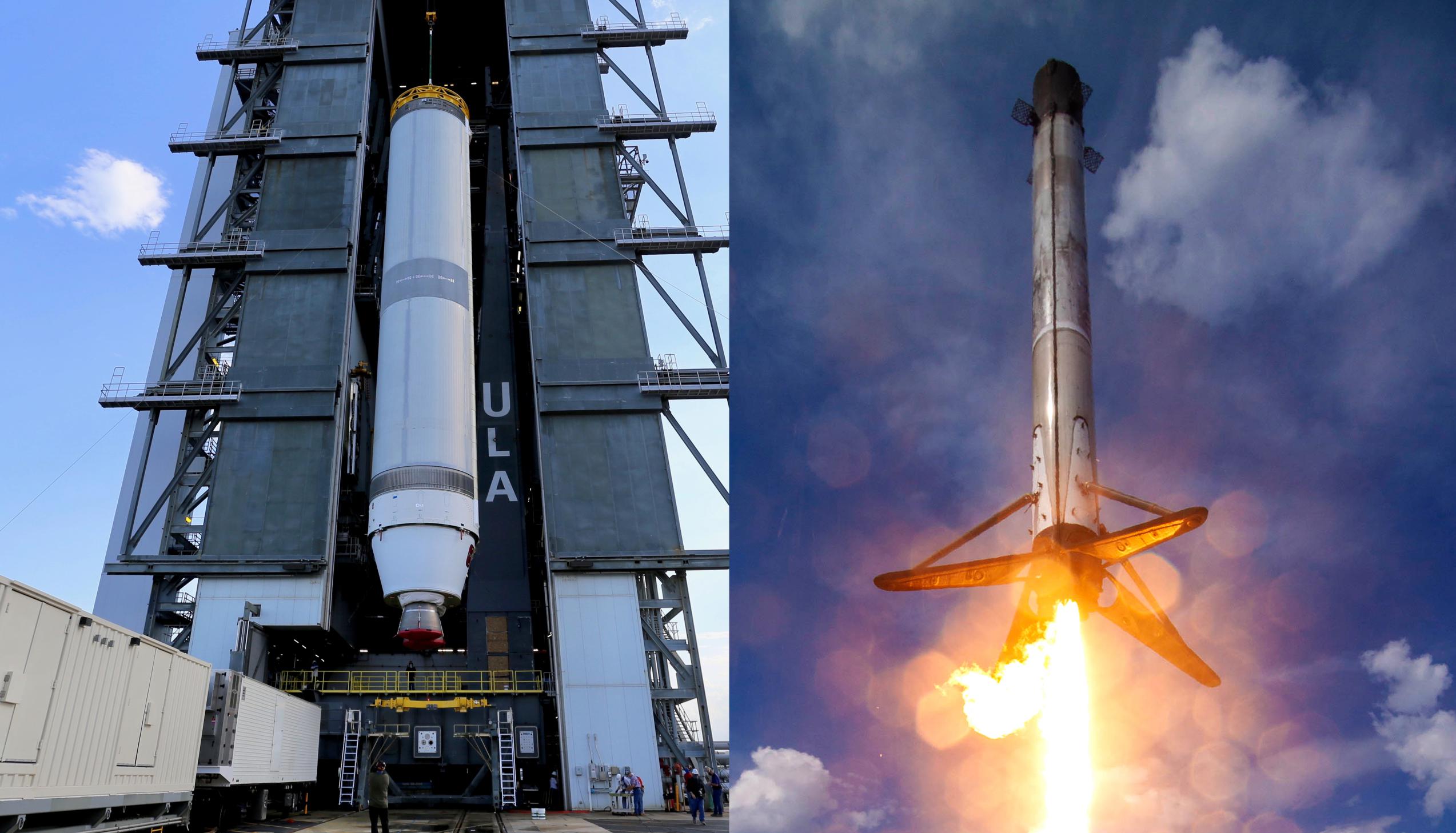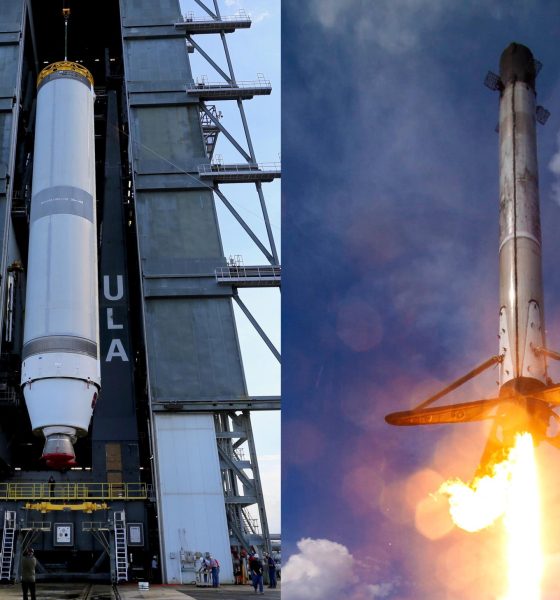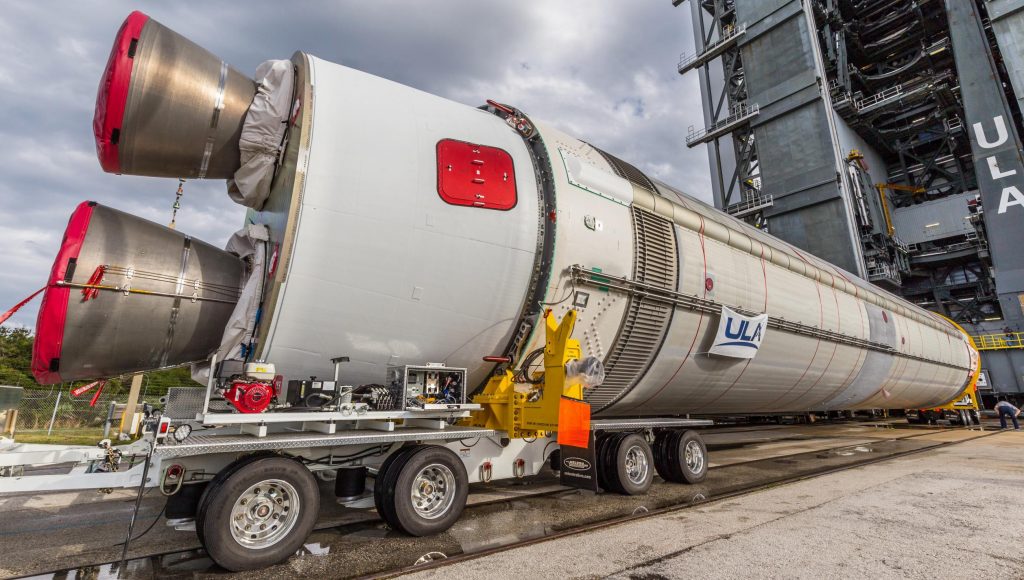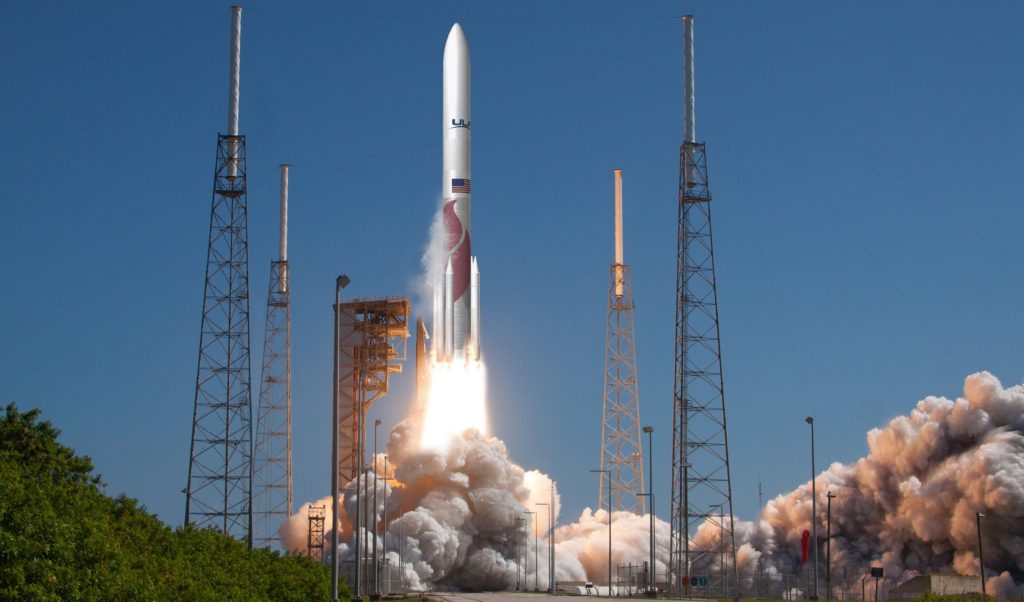

News
SpaceX Falcon 9 crushes next-gen ULA Vulcan rocket on cost in first competition
The United Launch Alliance’s (ULA) next-generation Vulcan Centaur rocket appears to have made it through what could be described as its first real competition with SpaceX and its Falcon 9 workhorse.
The US Space Force (or Air Force) awarded both rockets two launch contracts each on March 9th, marking the second award under “Phase 2” of a new National Security Space Launch (NSSL; formerly Evolved Expendable Launch Vehicle or EELV) agreement. The culmination of a multi-year competition, NSSL Phase 2 calcified in late 2020 when the US military ultimately chose ULA and SpaceX as its primary launch providers for the better part of the next decade.
The final Phase 2 agreement followed Phase 1, in which the USAF committed up to $2.3 billion to assist Blue Origin, Northrop Grumman, and ULA in their efforts to develop future military launch capabilities. SpaceX submitted a proposal but didn’t win funds. Even though the ULA-SpaceX dichotomy was already a more or less fixed outcome before the competition even began, the US military still managed to dole out almost $800 million to Blue Origin and Northrop Grumman before announcing that neither provider had been selected for Phase 2.
Notably, as part of Phase 1, ULA is on track to receive nearly $1 billion in USSF/USAF aid to develop its next-generation Vulcan Centaur rocket and ensure that it meets all of the military’s exacting, unique requirements. SpaceX, on the other hand, received a sum total of $0 from that opaque slush fund to meet the exact same requirements as ULA.
For Phase 2, the US military arbitrarily split the roughly two-dozen launch contracts up for grabs into a 60/40 pile. Even more bizarrely, the USAF did everything in its power to prevent two of the three rockets it had just spent more than $1.7 billion to help develop from receiving any of those two or three-dozen available launch contracts – all but literally setting $800M of that investment on fire. Short of comical levels of blind ineptitude, verging on criminal negligence, the only possible explanation for the US military’s behavior with NSSL Phase 1 and Phase 2 is a no-holds-barred effort to guarantee that ULA and its Vulcan Centaur rocket would have zero real competition.
The arbitrary 60:40 split of the final Phase 2 contract ‘lot’ further supports that argument. A government agency objectively interested in securing the best possible value and redundancy for its taxpayer-provided money would logically exploit a $1.7B investment as much as possible instead of throwing two-thirds of its ultimate value in the trash. On its own, a block-buy scenario – even with a leading goal of selecting two providers – is fundamentally inferior to an open competition for each of the dozens of launch contracts at hand.
Further, selecting the block-buy option and failing to split those contracts 50:50 makes it even clearer that the USAF’s only steadfast NSSL Phase 2 goal was to guarantee ULA enough Vulcan launch contracts for the company to be comfortable and (most likely) not lose money on a rocket that has yet to demonstrate an ability to compete on the commercial launch market.

Amazingly, despite multiple handicaps in the form of a 60:40 contract split and what amounts to a $1B subsidy that explicitly disadvantages its only competitor, ULA’s Vulcan rocket still appears to be ~40% more expensive than SpaceX’s Falcon 9. In the latest round of NSSL Phase 2 contracts, seemingly the first in which ULA’s Vulcan Centaur rocket was selected, SpaceX’s Falcon 9 received two East Coast launch contracts worth slightly less than $160M, averaging out to less than $80M each.
Outfitted with four of a possible zero, two, four, or six strap-on solid rocket boosters (SRBs), Vulcan Centaur received two launch contracts for $224M – an average of $112M each. Assuming ULA wins exactly 60% (~15) of the Phase 2 launch contracts up for grabs and receives no more than $1 billion in USAF development funding through NSSL Phase 1, some $67 million will have to be added to the cost of each announced Vulcan launch contract to get a truly accurate picture. In the case of the rocket’s first two contracts, the real average cost of each Vulcan Centaur launch could thus be closer to $179M ($112M+$67M).

According to ULA CEO Tory Bruno, both Vulcan missions are to “high-energy orbits,” whereas a USAF official told Spaceflight Now that SpaceX’s two Falcon 9 contracts were to “lower-energy orbits.” In Vulcan’s defense, if Bruno’s “high-energy orbit” comment means a circular geostationary orbit (GEO) or a very heavy payload to an elliptical geostationary transfer orbit (GTO), it’s possible that SpaceX would have had to use Falcon Heavy to complete the same contracts. Against Falcon Heavy’s established institutional pricing and excluding ULA’s $1B Phase 1 subsidy, Vulcan Centaur is reasonably competitive.
Ultimately, even with several significant cards stacked against it, SpaceX appears likely to continue crushing entrenched competitors like ULA and Arianespace on cost while still offering performance and results equivalent to or better than even than their “next-generation” rockets.

News
Tesla China delivery centers look packed as 2025 comes to a close
Needless to say, it appears that Tesla China seems intent on ending 2025 on a strong note.

Tesla’s delivery centers in China seem to be absolutely packed as the final days of 2025 wind down, with photos on social media showing delivery locations being filled wall-to-wall with vehicles waiting for their new owners.
Needless to say, it appears that Tesla China seems intent on ending 2025 on a strong note.
Full delivery center hints at year-end demand surge
A recent image from a Chinese delivery center posted by industry watcher @Tslachan on X revealed rows upon rows of freshly prepared Model Y and Model 3 units, some of which were adorned with red bows and teddy bears. Some customers also seem to be looking over their vehicles with Tesla delivery staff.
The images hint at a strong year-end push to clear inventory and deliver as many vehicles as possible. Interestingly enough, several Model Y L vehicles could be seen in the photos, hinting at the demand for the extended wheelbase-six seat variant of the best-selling all-electric crossover.
Strong demand in China
Consumer demand for the Model Y and Model 3 in China seems to be quite notable. This could be inferred from the estimated delivery dates for the Model 3 and Model Y, which have been extended to February 2026 for several variants. Apart from this, the Model Y and Model 3 also continue to rank well in China’s premium EV segment.
From January to November alone, the Model Y took China’s number one spot in the RMB 200,000-RMB 300,000 segment for electric vehicles, selling 359,463 units. The Model 3 sedan took third place, selling 172,392. This is quite impressive considering that both the Model Y and Model 3 are still priced at a premium compared to some of their rivals, such as the Xiaomi SU7 and YU7.
With delivery centers in December being quite busy, it does seem like Tesla China will end the year on a strong note once more.
News
Tesla Giga Berlin draws “red line” over IG Metall union’s 35-hour week demands
Factory manager André Thierig has drawn a “red line” against reducing Giga Berlin’s workweek to 35 hours, while highlighting that Tesla has actually increased its workers’ salaries more substantially than other carmakers in the country.

Tesla Giga Berlin has found itself in a new labor dispute in Germany, where union IG Metall is pushing for adoption of a collective agreement to boost wages and implement changes, such as a 35-hour workweek.
In a comment, Giga Berlin manager André Thierig drew a “red line” against reducing Giga Berlin’s workweek to 35 hours, while highlighting that Tesla has actually increased its workers’ salaries more substantially than other carmakers in the country.
Tesla factory manager’s “red line”
Tesla Germany is expected to hold a works council election in 2026, which André Thierig considers very important. As per the Giga Berlin plant manager, Giga Berlin’s plant expansion plans might be put on hold if the election favors the union. He also spoke against some of the changes that IG Metall is seeking to implement in the factory, like a 35-hour week, as noted in an rbb24 report.
“The discussion about a 35-hour week is a red line for me. We will not cross it,” Theirig said.
“(The election) will determine whether we can continue our successful path in the future in an independent, flexible, and unbureaucratic manner. Personally, I cannot imagine that the decision-makers in the USA will continue to push ahead with the factory expansion if the election results favor IG Metall.”
Giga Berlin’s wage increase
IG Metall district manager Jan Otto told the German news agency DPA that without a collective agreement, Tesla’s wages remain significantly below levels at other German car factories. He noted the company excuses this by referencing its lowest pay grade, but added: “The two lowest pay grades are not even used in car factories.”
In response, Tesla noted that it has raised the wages of Gigafactory Berlin’s workers more than their German competitors. Thierig noted that with a collective agreement, Giga Berlin’s workers would have seen a 2% wage increase this year. But thanks to Tesla not being unionized, Gigafactory Berlin workers were able to receive a 4% increase, as noted in a CarUp report.
“There was a wage increase of 2% this year in the current collective agreement. Because we are in a different economic situation than the industry as a whole, we were able to double the wages – by 4%. Since production started, this corresponds to a wage increase of more than 25% in less than four years,” Thierig stated.
News
Tesla is seeing a lot of momentum from young Koreans in their 20s-30s: report
From January to November, young buyers purchased over 21,000 Teslas, putting it far ahead of fellow imported rivals like BMW and Mercedes-Benz.

Tesla has captured the hearts of South Korea’s 20s-30s demographic, emerging as the group’s top-selling imported car brand in 2025. From January to November, young buyers purchased over 21,000 Teslas, putting it far ahead of fellow imported rivals like BMW and Mercedes-Benz.
Industry experts cited by The Economist attributed this “Tesla frenzy” to fandom culture, where buyers prioritize the brand over traditional car attributes, similar to snapping up the latest iPhone.
Model Y dominates among young buyers
Data from the Korea Imported Automobile Association showed that Tesla sold 21,757 vehicles to the 20s-30s demographic through November, compared to BMW’s 13,666 and Mercedes-Benz’s 6,983. The Model Y led the list overwhelmingly, with variants like the standard and Long Range models topping purchases for both young men and women.
Young men bought around 16,000 Teslas, mostly Model Y (over 15,000 units), followed by Model 3. Young women followed a similar pattern, favoring Model Y (3,888 units) and Model 3 (1,083 units). The Cybertruck saw minimal sales in this group.
The Model Y’s appeal lies in its family-friendly SUV design, 400-500 km range, quick acceleration, and spacious cargo, which is ideal for commuting and leisure. The Model 3, on the other hand, serves as an accessible entry point with lower pricing, which is valuable considering the country’s EV subsidies.
The Tesla boom
Experts described Tesla’s popularity as “fandom culture,” where young buyers embrace the brand despite criticisms from skeptics. Professor Lee Ho-geun called Tesla a “typical early adopter brand,” comparing purchases to iPhones.
Professor Kim Pil-soo noted that young people view Tesla more as a gadget than a car, and they are likely drawn by marketing, subsidies, and perceived value. They also tend to overlook news of numerous recalls, which are mostly over-the-air software updates, and controversies tied to the company.
Tesla’s position as Korea’s top import for 2025 seems secured. As noted by the publication, Tesla’s December sales figures have not been reported yet, but market analysts have suggested that Tesla has all but secured the top spot among the country’s imported cars this year.








